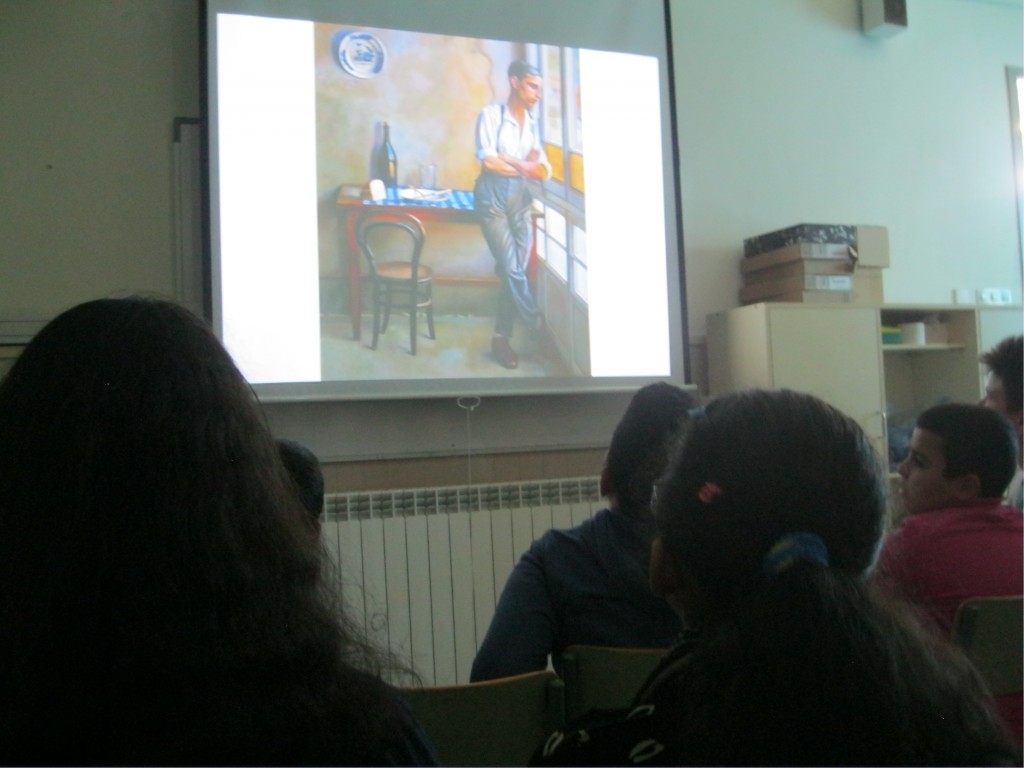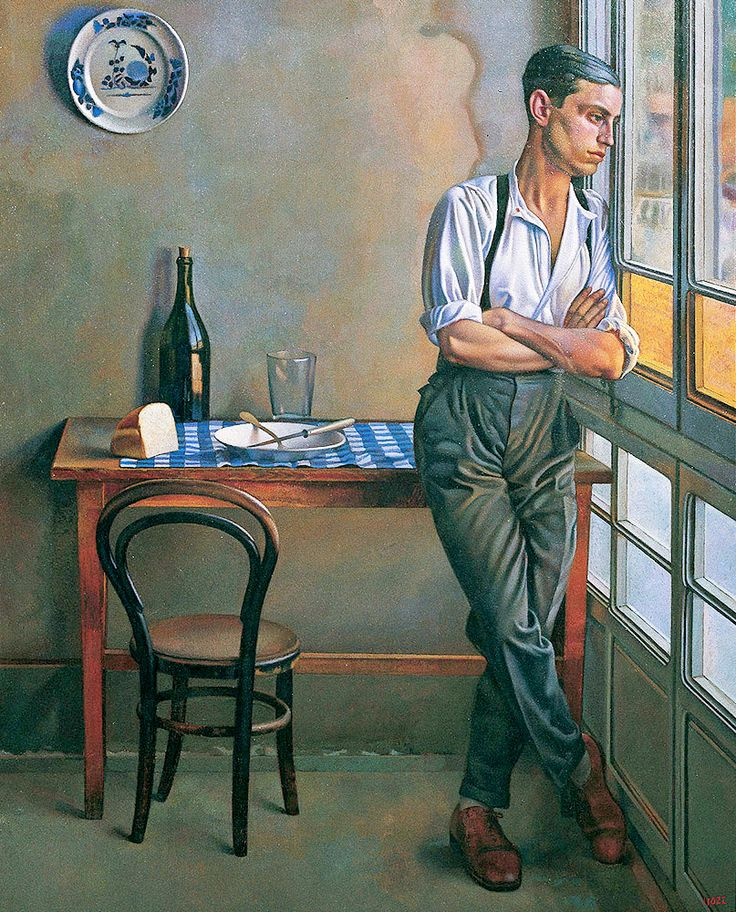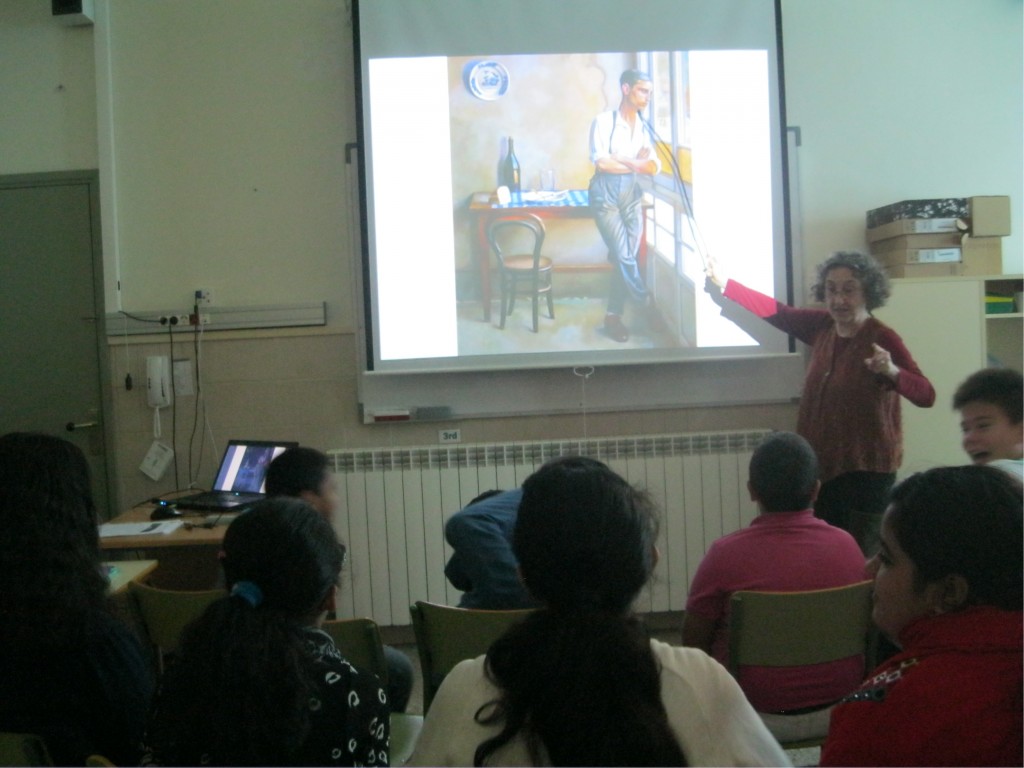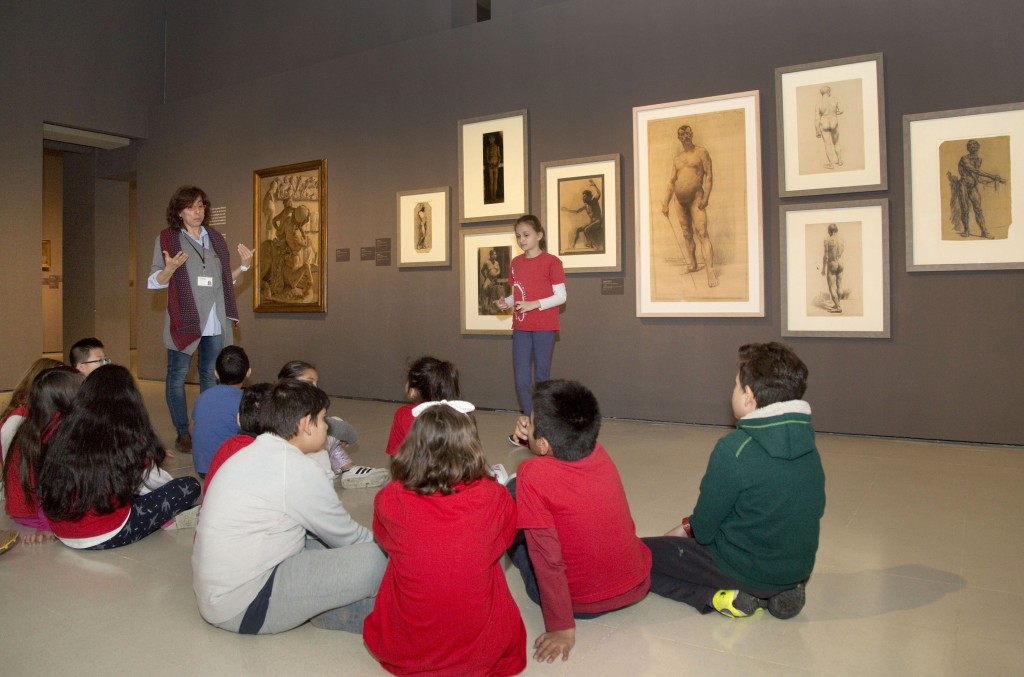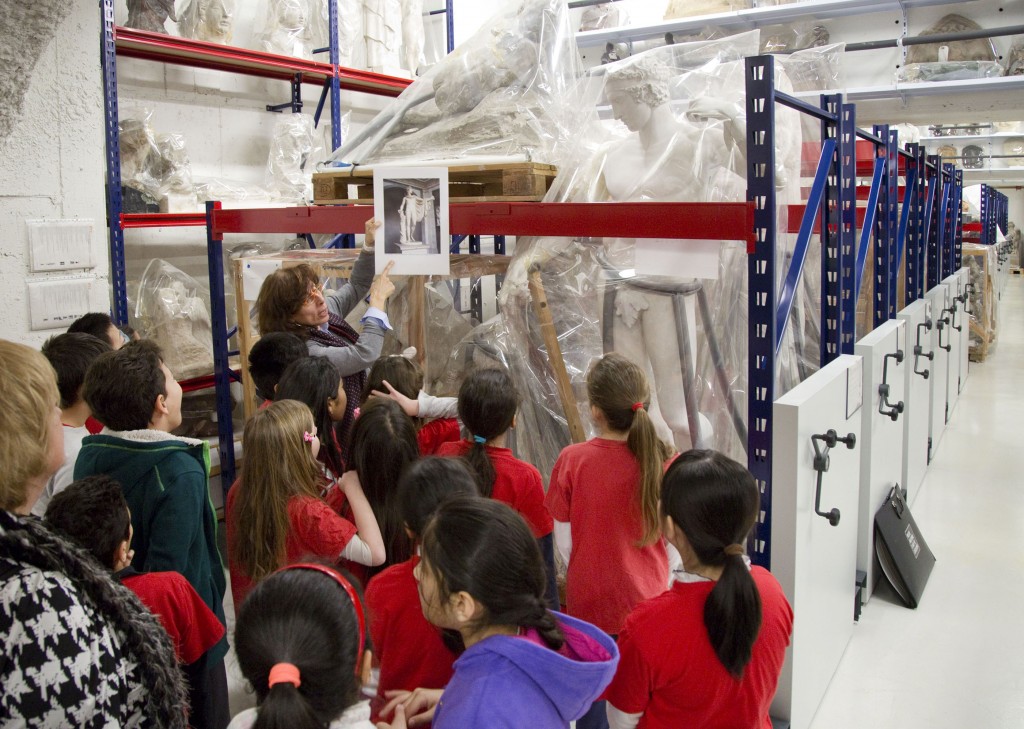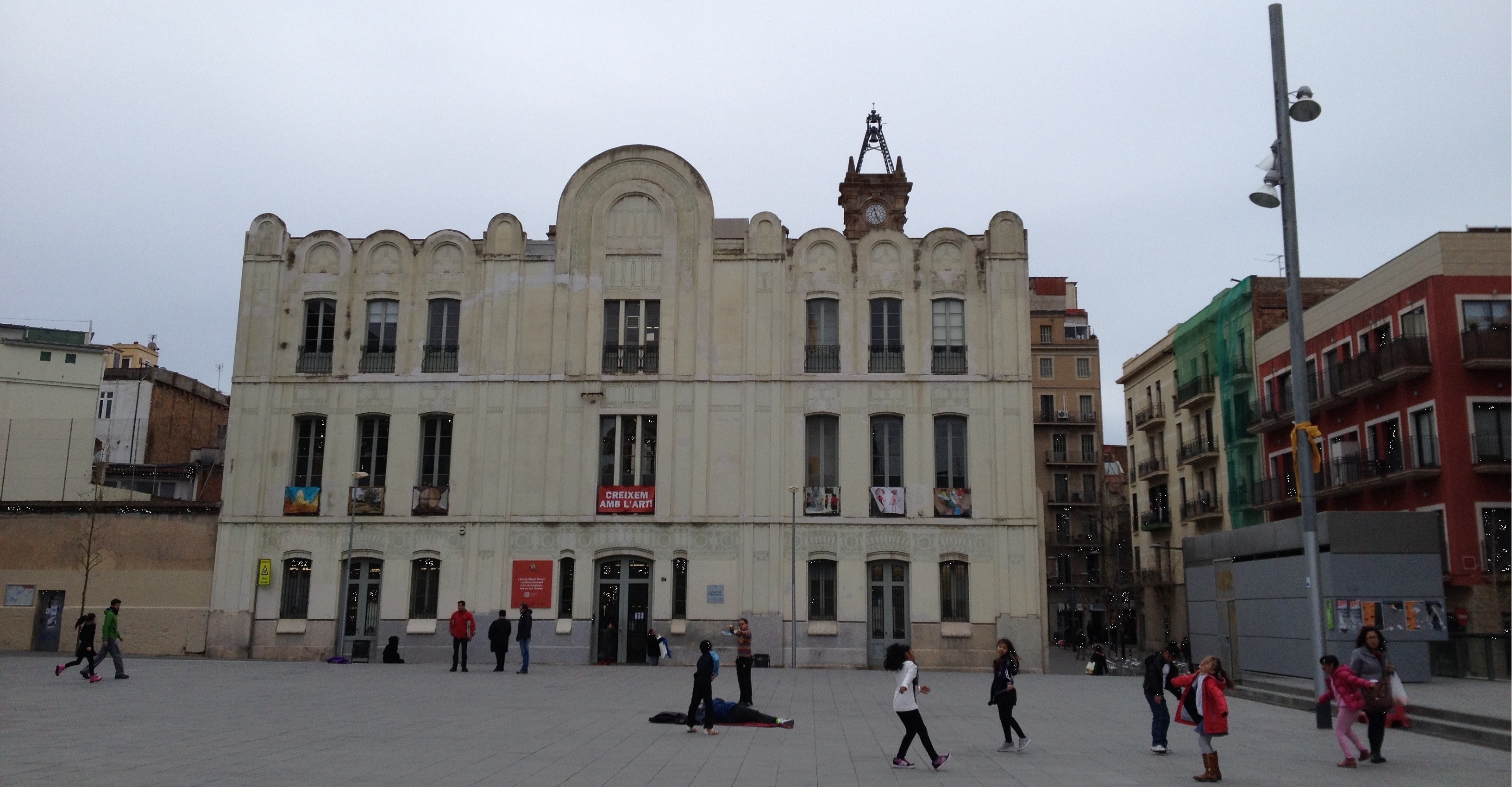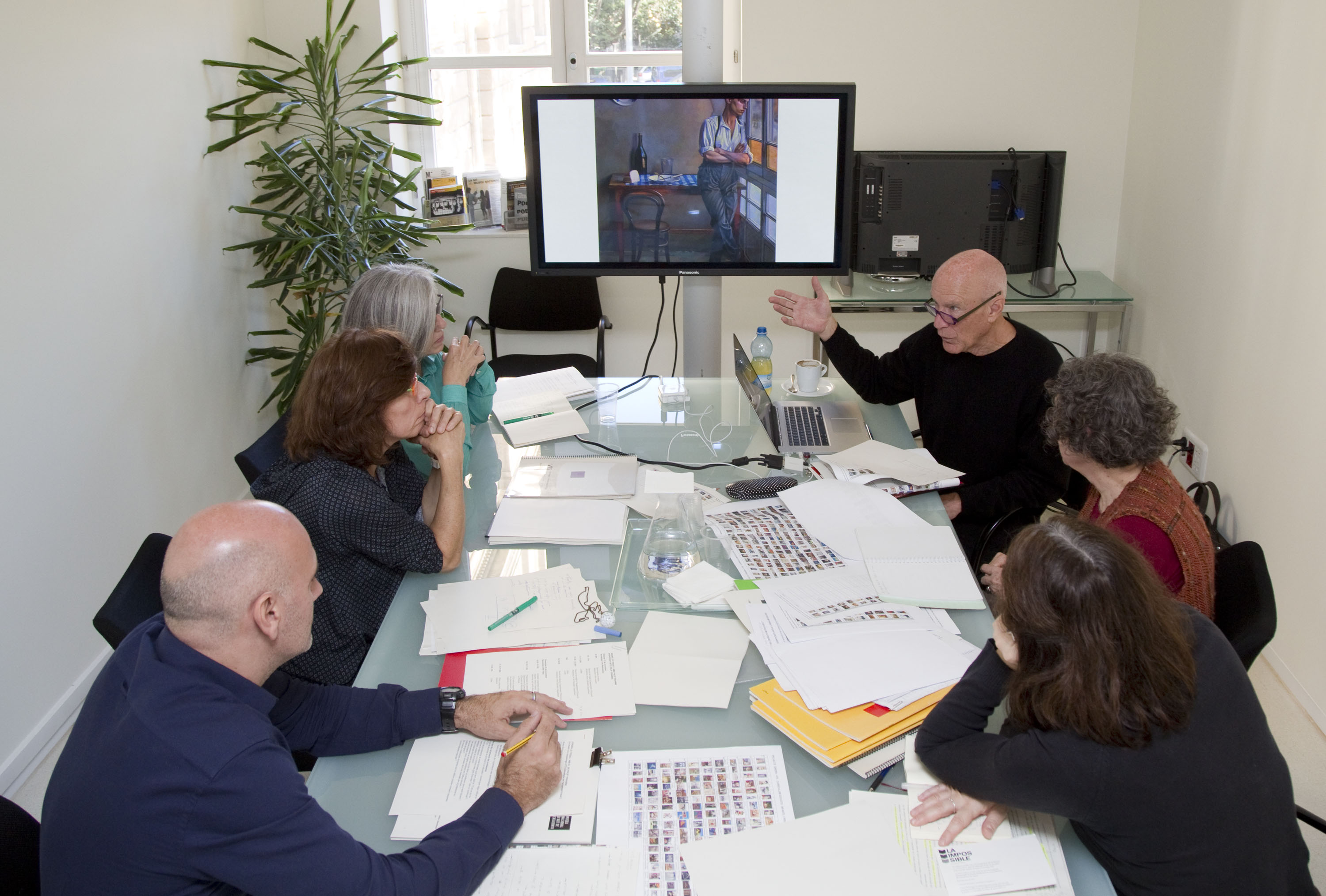We are in the Escola Miquel Bleach, and we invite you to participate in a session of VTS (Visual Thinking Strategies), within the framework of the Tàndem Project which is being carried out by this school with the Museu Nacional d’Art de Catalunya.
Everything is ready for the activity. They are 4th year Primary students.
We listen to the polite and encouraging welcome of the teachers, some words to situate us and foster a suitable atmosphere for listening and creating interest in participating and…
Let’s get going!
One of the images that corresponds to the day’s session is projected: surprised faces, filled with curiosity… a moment’s silence to familiarise ourselves with the artwork…
This is the moment to formulate the key question about the method so as to begin the observation and start the dialogue. What’s happening in this image?
And then everything begins to flow: hands being raised, words that express ideas and feelings, hypotheses put forward which are discussed by making reference to the visual signs of the work, exchanges of different opinions about this, enigmas which are resolved, etc.
And the dialogue leads to the debate which gradually takes on form with the interventions of everyone, with the stimulus of the question introduced by the teacher and with the application of the different methodological strategies.
What can you see that makes you say that?
–It seems to me that this boy is sad because his girlfriend has left him… he’s looking through the window to see if she’s returning…
–I would say that he’s worried because he can’t pay the household bills… I can see that the wall is very broken…
–I think he’s waiting for it to stop raining so that he can go out for a walk… I can see that the window panes seem to be wet and that’s why he hasn’t gone out yet.
What else can you find in this work?
And the discussion and the storytelling continue.
What is VTS?
Visual Thinking Strategies, the VTS, is an educational methodology that makes use of art so as to learn to think. It emerged in the 1980s as the result of a collaboration between the cognitive psychologist Abigail Housen, from the Harvard Graduate School of Education, and Philip Yenawine, educator from the MoMa of New York. The intention was to create a resource that would facilitate the approaching of children, youths and various publics to the world of art, in the most significant way.
The studies about its practice in schools and museums throughout the world, allows the habit to be fostered of exploring and talking about a work of art in a free and creative way, from their own references:
- exercising the verbal and communicative skills
- fostering the development of critical and creative thought
- reinforcing the self-esteem
- promoting the integration and inclusion of the participants
- contributing to the improvement of the different basic skills
- allowing the reflection about teaching practices and the educational models used.
What do we use the works of art in the VTS sessions for?
From this perspective, the work of art is not the object of study, it is the mediating element that allows us to reflect about ourselves, and about the complexity of the world.
We don’t learn about art, the art is used for learning.
It’s not a question of doing art history, or talking about styles, techniques, movements, or even becoming an artist.
The teachers are not the transmitters of knowledge, they act as facilitators of exploration, dialogue, debate and the creation of the storytelling of the group.
VTS is an educational tool for learning in diversity
In educational environments of major cultural diversity such as that of the Escola Miquel Bleach, in which the difficulties of expression and communication, and the integration of all the students are priority themes of attention, the VTS, used in a systematic way, have become highlighted as a very valuable tool for tackling some of these problematic issues.
This is the second course that the museum and the school has been working together on the implementation of this methodology in 4 groups of students and in the training of 8 teachers, who will be able to extend this activity to the whole of the school in the future. The educational team of the museum and the teachers and students of the school had the opportunity of sharing with Philip Yenawine a working day during the month of November. An emotional experience and very stimulating for everyone!
From the museum we would like to pass on our congratulations to the Miquel Bleach School for the highly deserved City of Barcelona Award for Education.
Related links
Talk by Philip Yenawine about VTS in the Portland Museum (video)
About the Tàndem del Museu Nacional d’Art de Catalunya and the Miquel Bleach School
Montserrat Morales, expert in VTS and and collaborator of the Tandem Project, coordinated by Esther Fuertes


